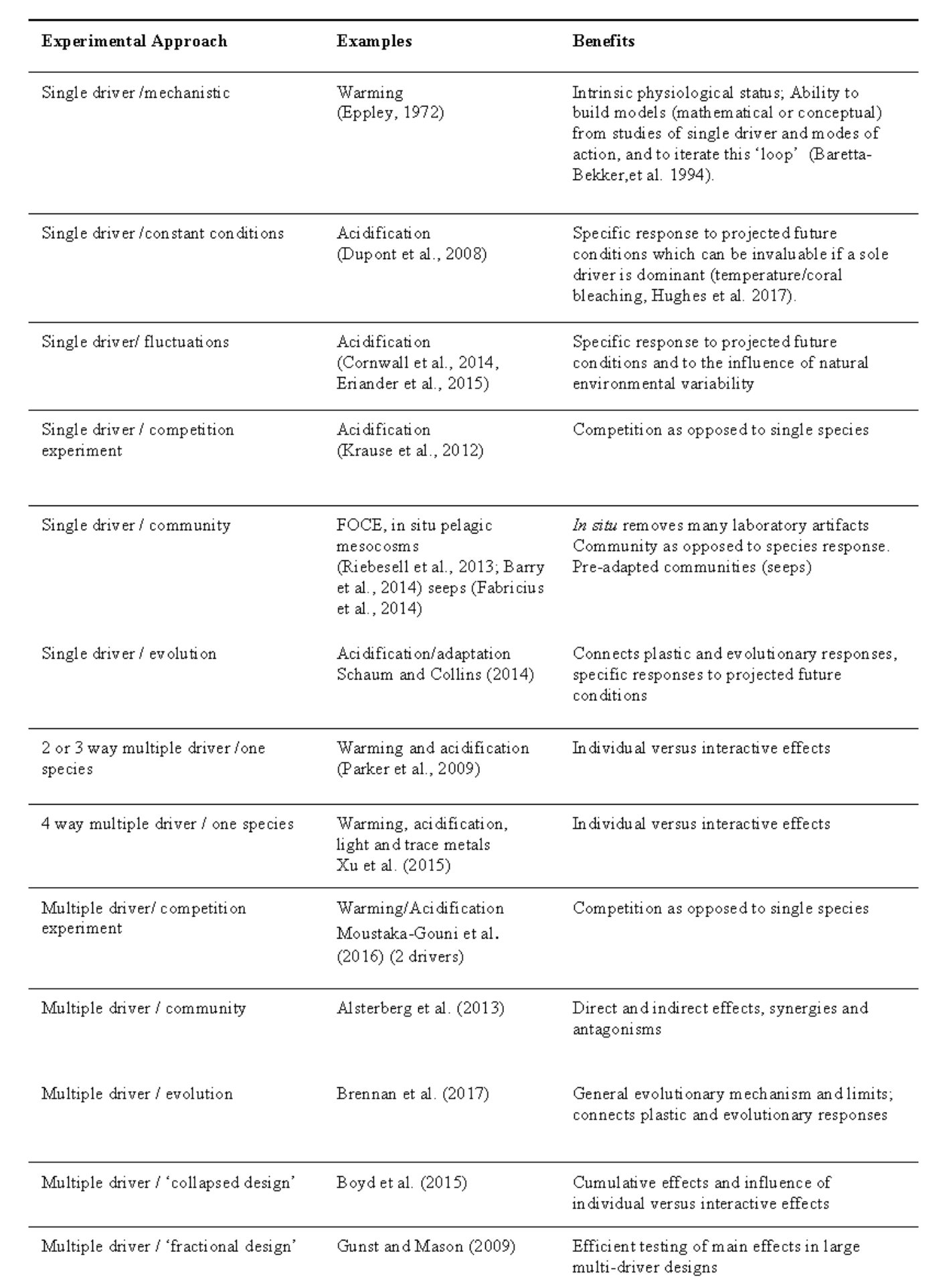Multiple driver experiments are logistically challenging and are often difficult to interpret. Hence, it is often better to commence with a simpler single driver experiment to provide the background with which to develop a subsequent Multiple driver experiments. Here is a summary of the many different approaches Than have been used by researchers.
Summary of the main experimental approaches used in multiple driver research, their advantages, disadvantages, and which research themes or fora they have mainly been used in. Note, many of the research questions posed throughout this review cannot be solved by one single experiment or experimental approach. Scenario-based experiments not only permit more replication (because of fewer treatments and treatment combinations), and hence greater statistical power, within the available resources, but also enable tests of more drivers, in different combinations, and/or at more levels. This is essential for identifying emerging patterns of how drivers interact (e.g. Brennan & Collins 2015). The benefits of such scenario testing include the development of practical methods to test for multi-driver effects that integrate the modulating effects of interacting drivers, and which can be applied beyond the species-level (i.e. in community-level experimentation). From Boyd et al. (2018)

For references in the Table and legend see Boyd et al. (2018)
Experimental strategies to assess the biological ramifications of multiple drivers of global ocean change—A review. Global Change Biology, DOI: 10.1111/gcb.14102
